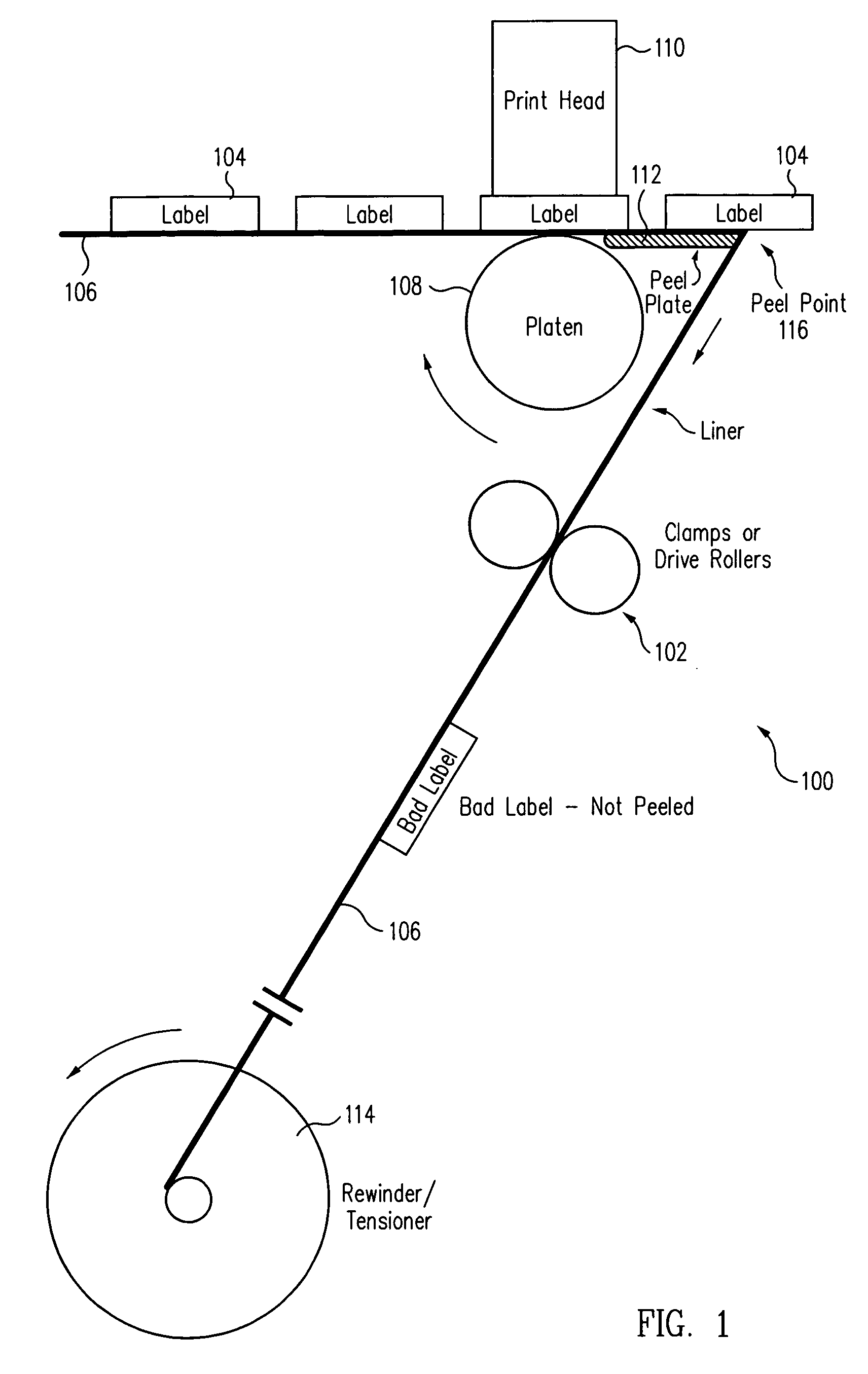Method and system for controlling label peeling and rejecting bad labels in a label printer or applicator system
- Summary
- Abstract
- Description
- Claims
- Application Information
AI Technical Summary
Benefits of technology
Problems solved by technology
Method used
Image
Examples
Embodiment Construction
[0019] According to one aspect of the present invention, a tensioning mechanism in a label printer / applicator system is placed close to the peel plate so that tension or release of tension can be quickly and accurately applied, resulting in better control of whether a bad label is peeled or retained on a liner.
[0020]FIG. 1 shows a portion of a label printer or applicator system 100 using a tensioning mechanism 102 according to one embodiment of the present invention. System 100 includes labels 104 adhered to a web or liner 106. Labels 104 can be any suitable label, such as a bar code label or other label containing visually / optically readable data or an RFID label with an embedded RFID tag to store desired data. A platen 108 or other suitable roller moves labels 104 across a print head 110 for reading and / or writing to each label. In some embodiments, the labels are printed or encoded prior to reaching print head 110 so that print head 110 only reads the information printed on or s...
PUM
| Property | Measurement | Unit |
|---|---|---|
| Length | aaaaa | aaaaa |
| Speed | aaaaa | aaaaa |
| Tension | aaaaa | aaaaa |
Abstract
Description
Claims
Application Information
 Login to View More
Login to View More - R&D
- Intellectual Property
- Life Sciences
- Materials
- Tech Scout
- Unparalleled Data Quality
- Higher Quality Content
- 60% Fewer Hallucinations
Browse by: Latest US Patents, China's latest patents, Technical Efficacy Thesaurus, Application Domain, Technology Topic, Popular Technical Reports.
© 2025 PatSnap. All rights reserved.Legal|Privacy policy|Modern Slavery Act Transparency Statement|Sitemap|About US| Contact US: help@patsnap.com



